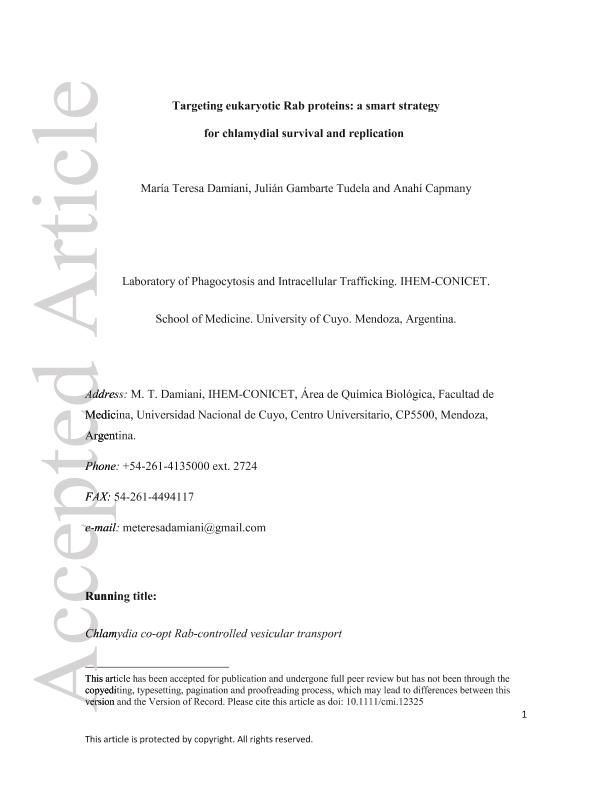Artículo
Targeting eukaryotic Rab proteins: a smart strategy for chlamydial survival and replication
Fecha de publicación:
08/2014
Editorial:
Wiley
Revista:
Cellular Microbiology (print)
ISSN:
1462-5814
e-ISSN:
1462-5822
Idioma:
Inglés
Tipo de recurso:
Artículo publicado
Clasificación temática:
Resumen
Chlamydia, an obligate intracellular bacterium which passes its entire lifecycle within a membrane-bound vacuole called the inclusion, has evolved a variety of unique strategies to establish an advantageous intracellular niche for survival. This review highlights the mechanisms by which Chlamydia subverts vesicular transport in host cells, particularly by hijacking the master controllers of eukaryotic trafficking, the Rab proteins. A subset of Rabs and Rab interacting proteins that control the recycling pathway or the biosynthetic route are selectively recruited to the chlamydial inclusion membrane. By interfering with Rab-controlled transport steps, this intracellular pathogen not only prevents its own degradation in the phagocytic pathway, but also creates a favourable intracellular environment for growth and replication. Chlamydia, a highly adapted and successful intracellular pathogen, has several redundant strategies to re-direct vesicles emerging from biosynthetic compartments that carry host molecules essential for bacterial development. Although current knowledge is limited, the latest findings have shed light on the role of Rab proteins in the course of chlamydial infections and could open novel opportunities for anti-chlamydial therapy.
Palabras clave:
Chlamydia
,
Proteínas Rab
,
Patogenos Intracelulares
,
Fagocitosis
Archivos asociados
Licencia
Identificadores
Colecciones
Articulos(IHEM)
Articulos de INST. HISTOLOGIA Y EMBRIOLOGIA DE MEND DR.M.BURGOS
Articulos de INST. HISTOLOGIA Y EMBRIOLOGIA DE MEND DR.M.BURGOS
Citación
Capmany, Anahi; Gambarte Tudela, Julian Alberto; Damiani, Maria Elena; Targeting eukaryotic Rab proteins: a smart strategy for chlamydial survival and replication; Wiley; Cellular Microbiology (print); 16; 9; 8-2014; 1329-1338
Compartir
Altmétricas




